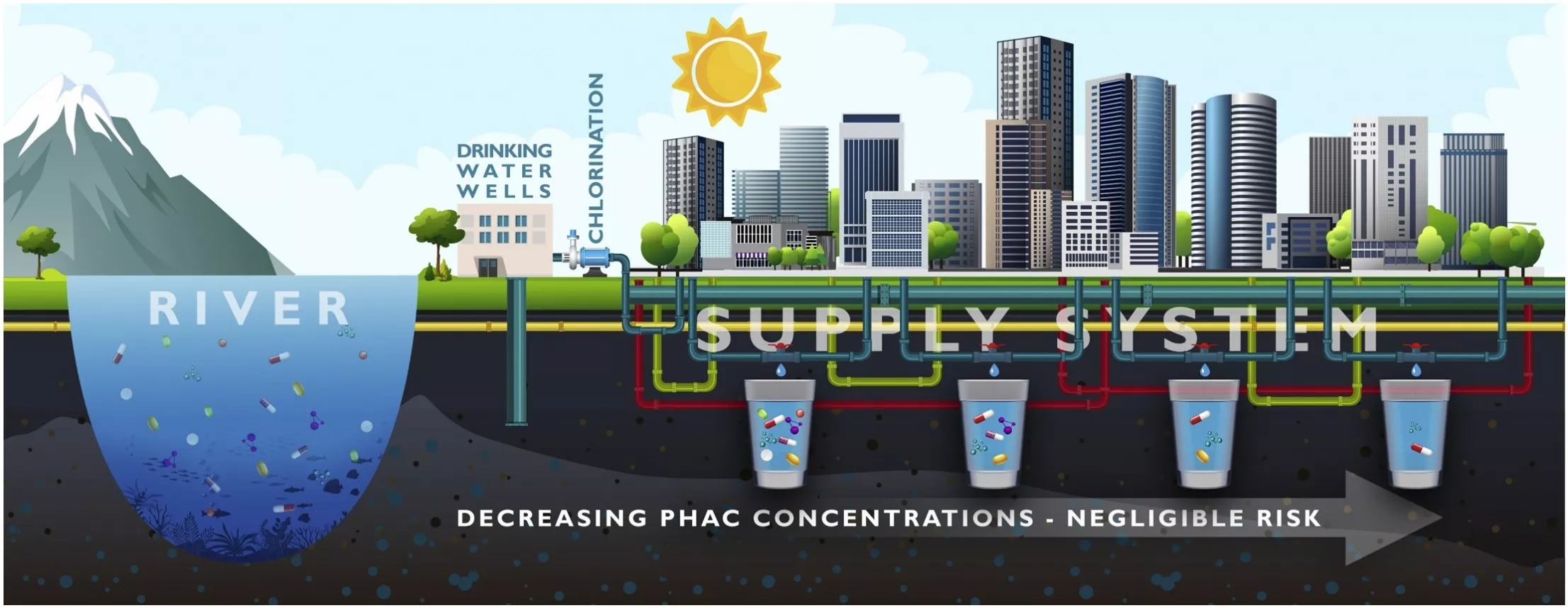As part of an NVKP project that also involved ELKH Centre for Ecological Research and the ELKH Balaton Limnological Research Institute, the ELKH Research Centre for Astronomy and Earth Sciences (CSFK) has led a research group that has studied the organic micropollutants of tap water from riverbank filtrated water wells in and around Budapest. The researchers have presented the results of the comprehensive, targeted study in the latest issue of the prestigious international journal Journal of Water Process Engineering. According to their study, the extremely low concentration of pharmaceutically active compounds (PhACs) detected in tap water does not pose a risk to human health, though the presence of the compounds is a warning sign for experts concerned with medium- and long-term waterbase protection.
In 2020, research led by the CSFK and the resulting publication, which revealed the presence of a total of 32 drug residues in the untreated, raw water of riverbank filtered water bases along the Danube, provoked a significant media response. Although the concentrations were low, the question rightly arose as to whether the situation could have an impact on human health through the consumption of drinking water. In response, a consortium of CSFK, the Research Centre for Astronomy and Earth Sciences, the Lake Balaton Limnological Institute, the Hungarian University of Agricultural and Life Sciences, Aquaprofit Zrt., and UTB Envirotec Zrt. collected 108 water samples from 21 different taps and subjected them to detailed analytical testing.
The researchers searched for a total of 102 PhACs in tap water, 19 of which were found to be present, but typically sporadically and at markedly low concentration levels. The most frequently detected drug, found in 54% of the samples, was carbamazepine, which is mainly used for the treatment of epilepsy and depression, with a mean concentration of 8.86 nanograms/liter in the samples as a whole. This is an extremely negligible amount: a person would have to drink two liters of water a day for 80 years to get a total of approximately 0.5 mg of carbamazepine (for comparison, the daily therapeutic dose of this medicine is 800 mg). The antidepressant lamotrigine and the analgesics lidocaine and tramadol also appeared relatively more frequently in tap water, but these substances were only present in every third to fourth tap water sample.
The researchers examined the risks to human health of the detected active substances using international methodological standards, but the drug residues do not pose any risk, even in combination. In addition, one of the most significant features of the study was that concentrations of the more common, persistent substances in the tap water were usually only a fraction of those measured in the river bank filtrate, although riverbank filtrated water consumed in Budapest and urban areas is largely subject to disinfectant chlorination, which has no effect on drug molecules. The researchers also found that the decrease in drug concentrations depended on the distance from the water well. The reasonable explanation for this may be that drinking water passes through large waterways of different types, materials and conditions as it moves away from large waterworks, and the different microbiological and mineral media specific to each waterway section can together cause a decrease in drug residue concentrations.
The leader of the research, Dr Attila Csaba Kondor, indicated that, given the concentrations of the drug residue and insignificant risks, our concerns could be dismissed, were it not for the fact that pollution affecting our natural waters is becoming increasingly significant, and the key question is whether it will reach a level that can affect the entire food chain, including the quality of drinking water. It is easy to see that because the size of the groundwater supply is constant, the concentration of persistent micropollutants will also increase as a result of continuous pollution. Moreover, it is not yet known today how the simultaneous presence of a wide variety of drug residues and other toxic, organic and inorganic compounds interact and how this affects our natural environment, wildlife, and ultimately humanity.
To reduce the risks, under the CLEAREADY project launched by CSFK, researchers are working on a new technology that can remove PhACs in a more cost-effective way than before, even from more contaminated water, thus reducing the burden on drinking water supplies.
